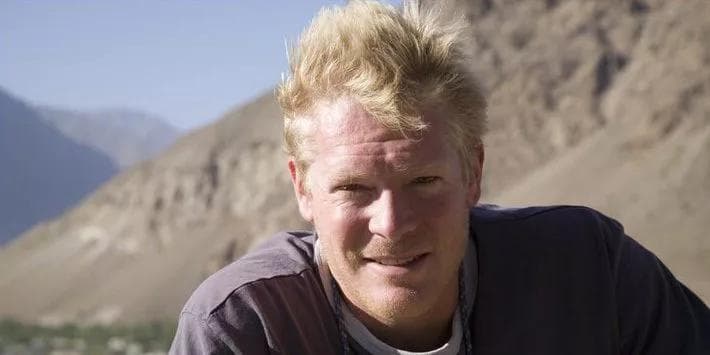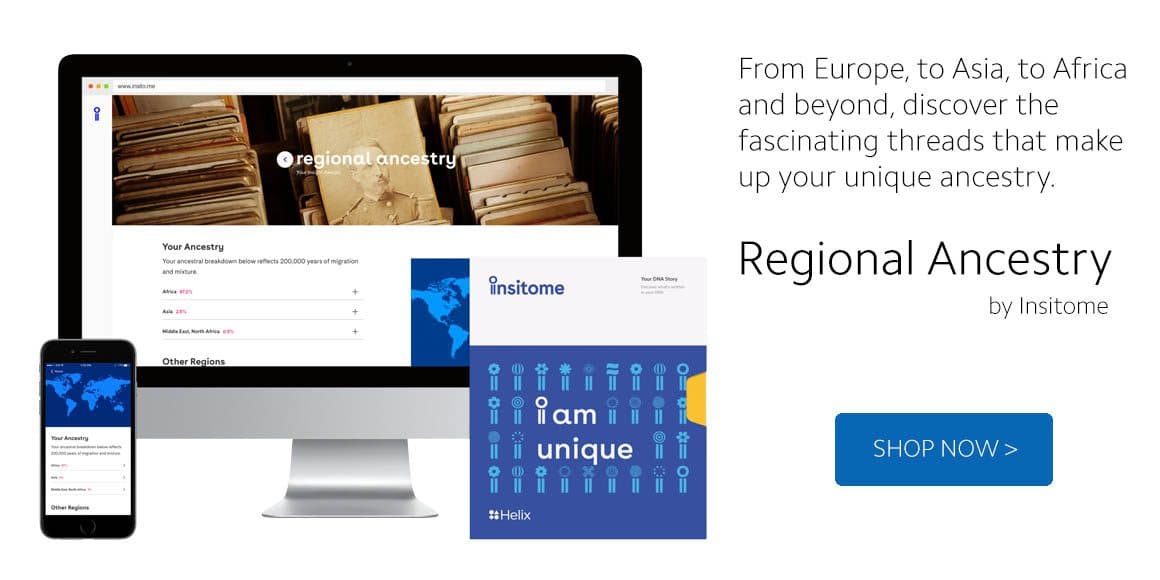An interview with Insitome’s Dr. Spencer Wells

If you’ve been following the personal genomics industry for any length of time—or you’ve got a passion for anthropology and human ancestry—odds are good you’ve heard the name Spencer Wells.
Dr. Wells is one of the most well-known figures in genetics, having led National Geographic’s Genographic Project for a decade. These days, he leads Insitome, a Helix partner with three innovative ancestry products currently available in the Helix Store: Neanderthal, Metabolism, and Regional Ancestry. We had a chance to speak with Dr. Wells to learn more about his company, his career, and the trends that have him excited this year.
You’ve been working to make genetic ancestry results accessible for longer than just about anyone. How has your mission evolved over the years?
Honestly, I never set out to create the consumer genomics industry when we launched the Genographic Project in 2005 [Wells was the founder and director of the Genographic Project from 2005-2015]. With my 2003 film Journey of Man, which chronicled our efforts to decipher ancient human migration patterns, we did a global promotion with the National Geographic Channel in late 2002 where we tested celebrities in key markets around the world for some of the Y-chromosome markers we discuss in the film—people like Jackie Chan in Hong Kong, for instance. The testing was done in an academic lab in the US, and was a long, tedious process. However, when people got their results back they were amazed by the story that was revealed—origins in Africa, migrations to Europe or East Asia or the Americas tens of thousands of years ago, their ancestors’ roles in the origins of agriculture, and so on.
This gave me an inkling that there might be a market for a reliable consumer genetic ancestry test, and as we were planning Genographic in 2003 and 2004, that became one of the three core components of the project, along with the basic field research and the Legacy Fund. However, we never expected it to sell as well as it did. In fact, just before I stepped out on stage at National Geographic headquarters in April of 2005 to announce the project to the world, the then-CEO of National Geographic (John Fahey) told me not to over-sell the public participation component of the project—he said we would be lucky to sell a thousand of them over the next five years, because, after all, who would want to pay to have their DNA tested? Well, we sold 10,000 that first day, hit 100,000 by the end of that year, and suddenly the industry was off and running. As of last year, 12 million people had tested their DNA through a consumer genomics company. It’s gone mainstream, and I’m very pleased to have played a role in helping to kick it all off.
“DNA hasn’t simply been a passive passenger on the human journey, it’s been actively involved in helping us to survive as well.”
You recently launched Regional Ancestry, Insitome’s third product in the Helix Store. What makes it different—and how do you see your products fitting together?
All of our products are aimed at telling you about various aspects of your ancestry—where in the world your ancestors come from (Regional Ancestry), how our ancient trysts with Neanderthals and Denisovans impact your genome and traits you have today (Neanderthal), or how lifestyle changes with the development of agriculture around 10,000 years ago affect how you metabolize food and drink today (Metabolism). Most ancestry products focus on DNA as a passive connection between generations—a way to decipher relatedness, either to people today or people who lived in the distant past. Our products include that component, but also focus on the functional aspects of the story as well—how we’ve adapted to the world around us over time as we’ve migrated, innovated, and lived our lives. DNA hasn’t simply been a passive passenger on the human journey, it’s been actively involved in helping us to survive as well. The goal of our products is to help people to understand that story, and why it’s relevant to them today.
Looking ahead to the coming year in genetics, what are the events, topics, and technologies that have you the most excited?
In my opinion, the most exciting field of human population genetics these days is ancient DNA (aDNA), and there are several important aDNA papers that are going to be published this year. I’m excited about the huge genetic databases that are coming online as well—the UK Biobank has been a tremendous asset to all human geneticists, and the release of additional large datasets in Japan and elsewhere will only add to our knowledge of disease genetics and selection on the human genome. In terms of events, I always look forward to the annual American Society of Human Genetics conference. It’s a great way to keep up with old friends and colleagues (like the 50+ researchers who worked on the Genographic project over the course of a decade) and hear about cutting-edge science in a great setting—this year in San Diego.

We expect that a lot of people are going to be sequenced for the first time this year. What advice would you give them on getting started with DNA insights?
I would start with an ancestry product, because it’s the basis for everything else you’re going to look at in your genome. Genetics is a historical science, in that we get our DNA from our parents, grandparents, great-grandparents and so on—it’s literally a document of our ancestry. Understanding the rest of your genetic characteristics is based in large part on your ancestry.
We hear you’ve recently started a podcast! Can you tell us a little about it?
Yes, Razib Khan (Insitome’s Director of Scientific Content) and I started the podcast in December of last year. It’s called The Insight, and we’ve released 8 episodes so far, and intend to release weekly episodes from now on. We focus on the “human story”—origins, migrations, adaptation, ancestry, and so on—through a genetic lens, drawing on supporting research in anthropology, archaeology, linguistics, climatology, and other fields. Basically, it’s the story behind the genetic results you get in one of our products, and is meant (along with our blog) to be part of an immersive understanding of your genome, and the journey it has been on for the past several hundred thousand years. It’s really fun, and we’ve gotten a ton of downloads so far and very positive feedback, which is awesome. You can find it on iTunes, Google Play, or Stitcher.